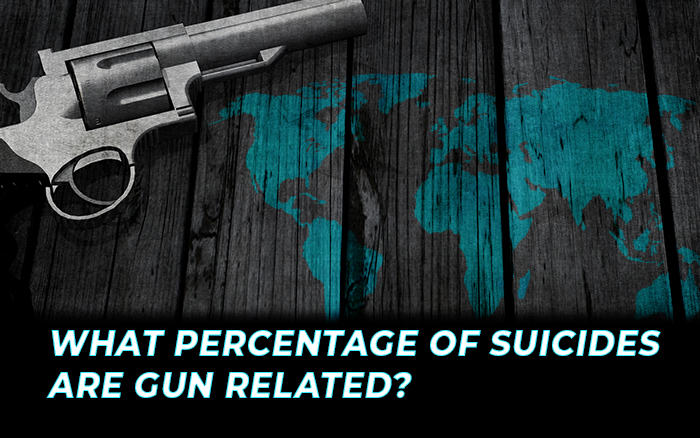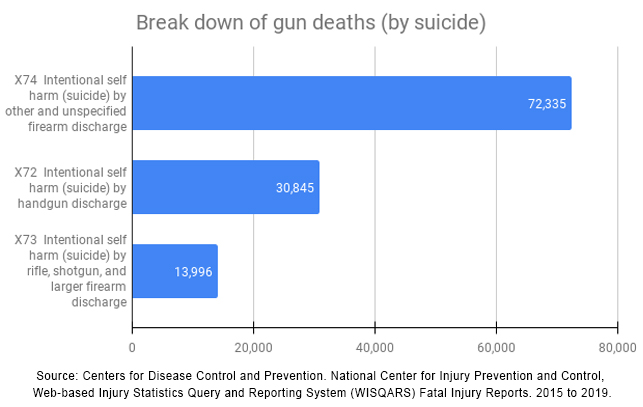
How to Help the Grieving Mother
April 20, 2021
An Introduction to Executorship and Estate
June 11, 2021Between 2015 and 2019, the CDC reported 50.5% suicides as a percentage of gun deaths. Indeed, suicide by gun deaths have been high since 2013. Now, let’s be clear: we are a suicide clean up company. We’re not replacing news reporters, lobbyists, data scientists, sociologists, or researchers, nor are we making a political statement in this post.
We are only presenting the data for a common question: “what percentage of gun deaths are suicidal?” The data used in this article was released by the CDC with itemized ICD 10 codes. The International Classification of Diseases (ICD-10) tracks common and abnormal diagnoses to help the CDC inform the public. For the purpose of this article, the ICD-10 coding provides statistics on suicide by gun incidents. You are encouraged to review the source data, but you might want to be familiar with how the CDC classifies suicide by gun incidents first.
What’s considered a “suicide by gun” incident?
When someone suicides themselves by gunshot, a coroner, pathologist, and a mortality coder document the death. A coroner determines the cause, the pathologist submits the paperwork, and a mortality coder assigns an ICD code, which usually includes the type of firearm used.
The ICD 10 codes for suicide attempt by gunshot are as follows*:
- X74 – Intentional self-harm by other and unspecified firearm and gun discharge
- X72 – Intentional self-harm by handgun discharge
- X73 – Intentional self-harm by rifle, shotgun and larger firearm discharge
This list will help you understand the gun deaths (suicide) statistics on the CDC website.
*- Note: The ICD-10 classifies suicide and suicide attempts together.
Percentage of suicide by gun deaths
Of 232,186 suicides overall, suicide by gun deaths accounted for a little over 50%. Between 2015 and 2019, the CDC reported 117,176 suicide gun deaths. The gun deaths are further broken down into the three ICD-10 codes explained above. A little over 61% of the suicide by gun deaths are from “other and unspecified firearm and gun discharge.” The rest were handguns (26.3%) or rifle/shotgun/larger firearms (11.9%).
Criticism
Human error is inevitable, even with data. That’s why margin of errors are important to consider. But, data or studies with high reliability tend to be pretty sound. The findings have stayed fairly consistent. The data is pretty solid overall, but not bulletproof to criticism (no pun intended).
Remember, when someone dies, multiple hands are involved in documenting the death. We hope everything always goes smoothly between the coroner and mortality coder, but there are bound to be errors. Similar discrepancies have already been found in studies covering how the cause of death is reported in Sweden. According to the study, 11% of deaths reported between 1998-2010 were classified with “garbage codes” by the WHO.
Takeaways
In this case, misclassifications seem to be a minor margin of error. The CDC’s suicide gun statistics are so predictable every year that misclassifications appear very rare. Gun suicides have been the predominant method of suicide since 2013. If misclassifications were a serious problem, the data would be a lot more unpredictable year to year.
You’re welcome to interpret this information your own way, however. As a clean up company, our intention is to inform with data and mention the potential discrepancies. The rest is up to you.
If you’d like to know more about how we’re involved, feel free to read about how we clean death by gunshot scenes. We hope to have been able to provide you with a no frills resource on the topic. If this article has helped you, please consider sharing it on social media so it can help someone else as well!



